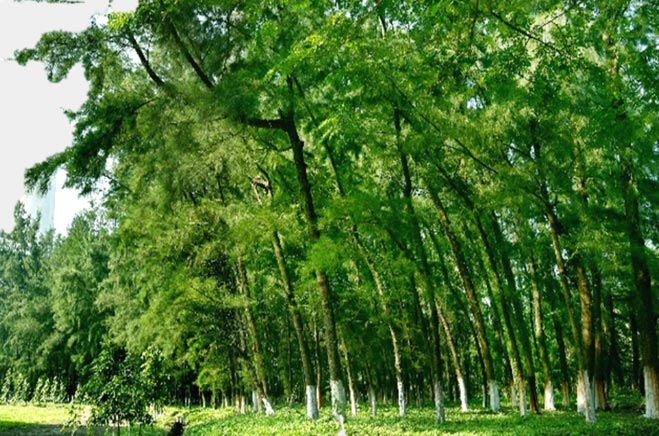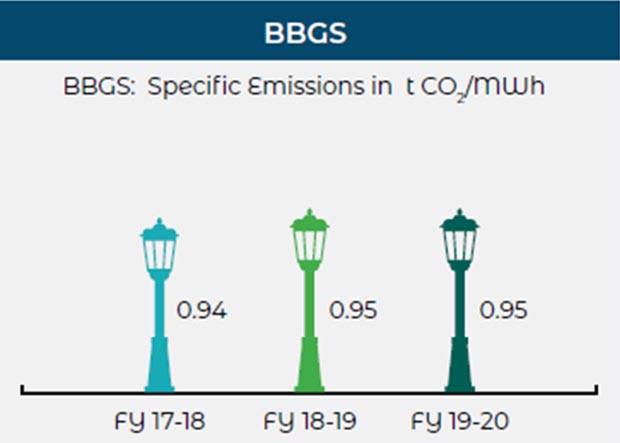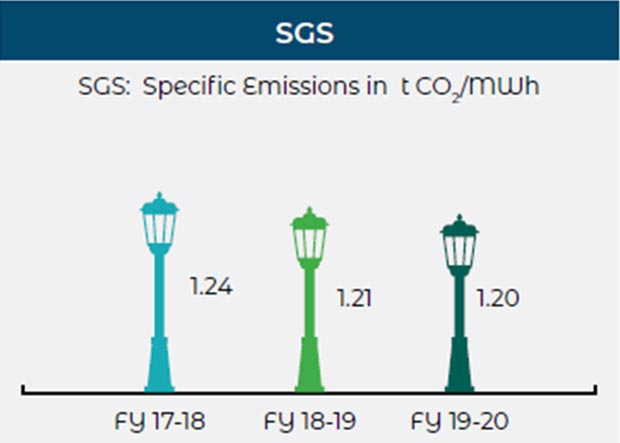We are committed to:
We have three coal fired power generating stations with a total capacity of 1125 MW. Out of these three power plants, the 750 MW Budge Budge Generating Station is the youngest (1997). The other two power plants are the 240 MW Titagarh Generating Station (1982) and the 135 MW Southern Generating Station (1990). All power plants are based on pulverised coal fired boilers and steam driven turbogenerators.
The first thermal power generating station of 15 MW capacity was erected in Cossipore in North Kolkata on the 20th July,1912. Two more 6 MW sets were added in 1912 and another 15 MW set was added in 1925. Further augmentation continued till 1932 when the installed capacity of Cossipore Generating Station totalled to 96 MW. In order to cater to the power requirement of the southern part of the city, a new generating station called “Southern Generating Station”, was commissioned on 22nd December 1926 at Metiabruz. Initial capacity of this power house was 22.5 MW comprising of three turbo alternators of 7.5 MW capacity each.
Gradually the installed capacity was increased to 70 MW. In the next phase of growth, another generating station, the “Mulajore Generating Station”, was commissioned in the northern suburbs of Kolkata on the 15th January 1940 with two 30 MW sets. Subsequent addition of turbo alternators followed in 1943, 1950 and 1951 resulting in a final capacity of 150 MW. The post World War II saw a boom for industrialization and the resultant demand for electricity gave birth to a modern power station in the year 1949 which was named “New Cossipore Generating Station”. The station comprised of two 30 MW sets and one 50 MW set. Another 50 MW set was added in 1963 increasing the installed capacity of the plant to 160 MW. In 1978, the Cossipore Generating Station was closed down due to aging. From early seventies, power shortage was experienced in the south of Bengal including the city of Kolkata. During this period, expansion programmes of CESC were restricted due to then prevailing regulations, which were however relaxed in the early eighties. Subsequently, the company constructed a 240 MW thermal power station at Titagarh in the northern suburbs of Kolkata. The plant has four 60 MW sets commissioned between 1983 and 1985. In the year 1986 it was decided to replace the old and retired Southern Generating Station with a new modern power plant comprising of two sets of 67.5 MW, the first of which was commissioned in 1990 and the second in 1991. In 1989, the West Bengal State Electricity Board handed over it's Kasba Gas Turbine Generating Station in Kolkata, having 2 X 20 MW Gas Turbine sets, to CESC on lease for Operation and Maintenance which continued till 1997. The youngest and largest power station of the company, Budge Budge Generating Station, consisting of two 250 MW sets was commissioned between 1997 to 1999. Later in 2010, the third 250 MW unit of Budge Budge was commissioned and thus the total generating capacity of Budge Budge became 750 MW. Due to ageing of the older plants, the Mulajore and New Cossipore Generating Stations have been closed down.
In the mechanism of the power generation process, the key focus areas are
The most important objective of our power generation process is to provide uninterrupted power to our consumers at a competitive price. Availability & Reliability of a power plant is related to the following two elementary performance indicators:
The availability factor of a power plant is the amount of time that it is able to produce electricity over a certain period, divided by the amount of the time in the period.
The plant load factor is defined as the ratio of the total actual energy produced over a definite period to the energy that would have been produced if the plant had operated continuously at the maximum rating in the period. PLF measures the % capacity utilization of a plant.
Our target is to attain higher PAF & higher PLF. PAF is related to outage of a unit (full or part). Outages can be planned or forced. Outages like statutory overhauling of boiler and condition-based maintenance fall in the category of planned outages, while outages like boiler tube leak, failure of turbine or generator including their critical auxiliaries lead to forced outages. Sometimes, operational failures, inadequacy of equipment and system disturbances also cause forced outages by tripping of the units. PAF & PLF have to be also maintained as per regulatory norms.
To serve power to our consumers at a competitive price and to be viable in the power generation business, power plant operation is needed to run efficiently. While high PAF and PLF ensures maximum availability and generation without any interruption, the economic generation of such units depends upon the following factors:
Power Plants use a host of motors, pumps, fans, pulverisers, conveyors etc., all of which consume power. This power is met from the Plant's own generation and is known as auxiliary power. It is targeted to lower the auxiliary power using modern technology like Variable Frequency drives, energy efficient motors, resizing and replacement of overdesigned equipment, modifying the operating regime and various other innovative means. The Budge Budge plant is also certified to ISO 50001:2018 for Energy Management systems.
Heat Rate is the amount of fuel energy (Kcal) required by a power plant to produce one unit (kilowatt- hour) of electrical energy. Increasing combustion efficiency, reducing boiler losses, real time monitoring and improving efficiency of power cycle equipment is practiced.
Keeping all the above factors low leads to lower cost of power generation.

In its constant endeavour to protect and preserve ecological goods and services through judicious use, CESC ensures compliance to applicable environmental regulations in India and de risks its operations from potential risks through a sound Environmental Management System. These processes are periodically audited internally, by external certification bodies and local regulatory authorities


Water conservation is achieved through zero liquid discharge (ZLD), bottom ash recirculation system, domestic sewage water treatment along with rain water harvesting system in all plants. CESC is proud to declare that 100% of treated water is reused and recycled in the operating plants. Specific water consumption figure at Budge Budge is well below the national benchmark.

Conservation of Biodiversity has been maintained around the power plants through formation of green belt in the plant area, cultivation of special medicinal plants and maintaining the water bodies. Other than that, Butterfly Conservation, protection of Migratory birds, pisciculture in water bodies etc. are carried out. Environmental awareness drive in the locality in various forms is also carried out.
In tune with the core values of the RP-SG group, the power plants are ISO 9001:2015, ISO 14001:2015 , ISO 45001:2018 and ISO 50001 certified certified in respect of Quality Management Systems, Environment Management Systems, Occupational Health and Safety Management Systems and Energy Management Systems. The power stations are moving towards achieving 5S status, notwithstanding having an established culture of KAIZEN.
Safe work environment with respect to workplace safety & employee health is of paramount importance to us and it builds a robust structure to embed safety as an interdependent culture. Guided by safety policy & ISO 45001 frameworks, well-documented system of Occupational Health Management and 24X7 medical team to support, the Division aims at a 'zero incident' workplace.
CESC has been at the forefront of using best-in-class technology and digital interventions to effect improvements in several key areas such as operations, maintenance, safety and asset management. The Centralised Remote Monitoring Control Room monitors the efficiency and reliability of major assets through advanced pattern recognition systems using big data analysis. The Asset Maintenance and Reliability Management system captures and analyses large amounts of data utilising cloud computing and big data analytics to provide a complete picture of machine health with advance indications. Data analytics is also used for optimisation of process parameters and for most efficient operation of the units. Internet of Things (IoT) integration with wireless sensors for monitoring of critical asset parameters is also being increasingly used. Digitalisation of complex maintenance and overhauling procedures by onsite visualisation using digital hand-held devices and application of robotics for inspection of inaccessible areas have also been adopted. At the same time, CESC is also alive to the digital security threats and has taken suitable protective measures, which are also in line with the guidelines issued by Ministry of Power, Government of India.
Budge Budge Generating Station is the first coal based thermal power station in the world to have registered a CDM project and earn Carbon Credits from UNFCCC.
Budge Budge Generating Station is one of the world's first power plants to achieve 100% recycling of effluent.
Southern Generating Station is the world's first power plant to install micro hydel power plant harnessing energy of CW out fall.